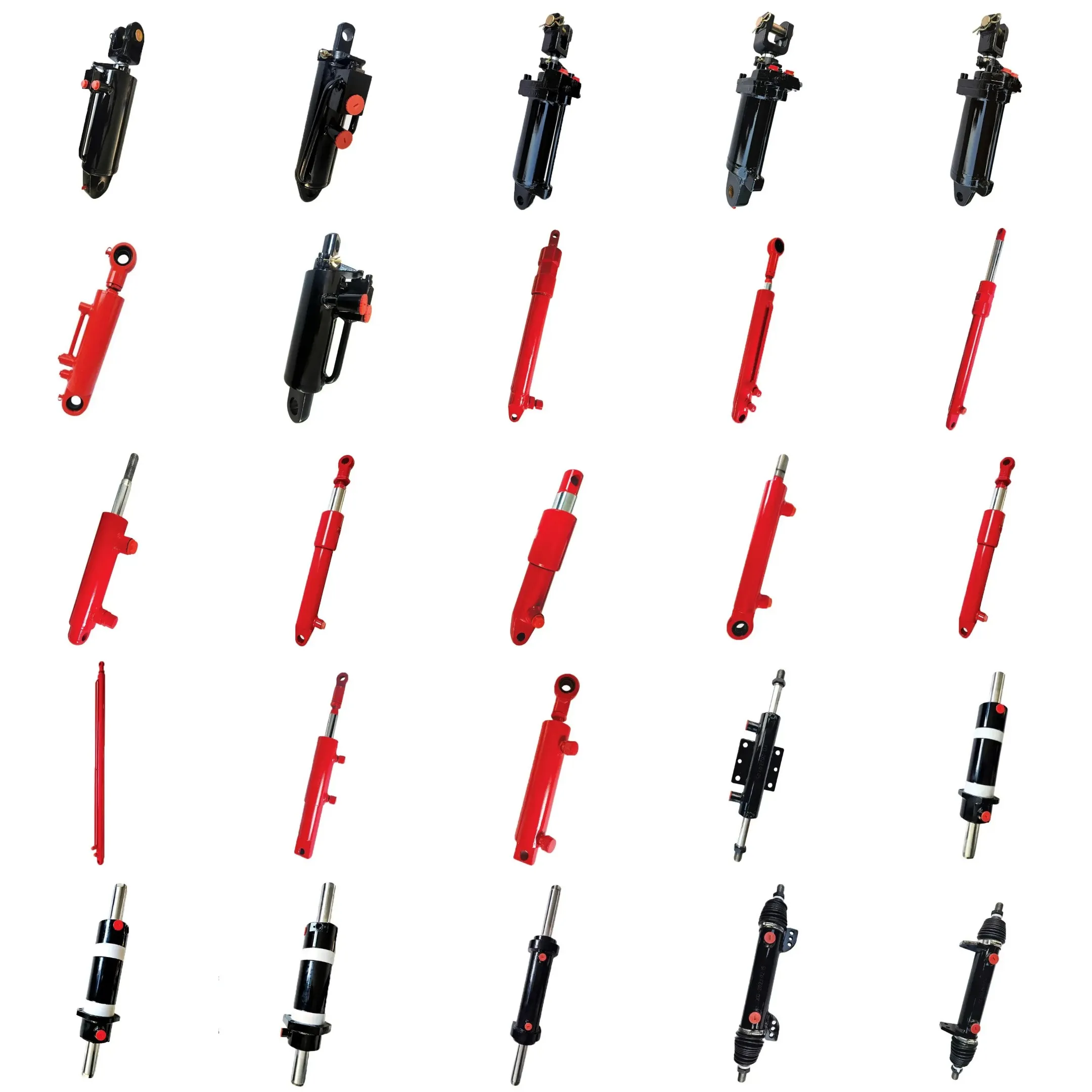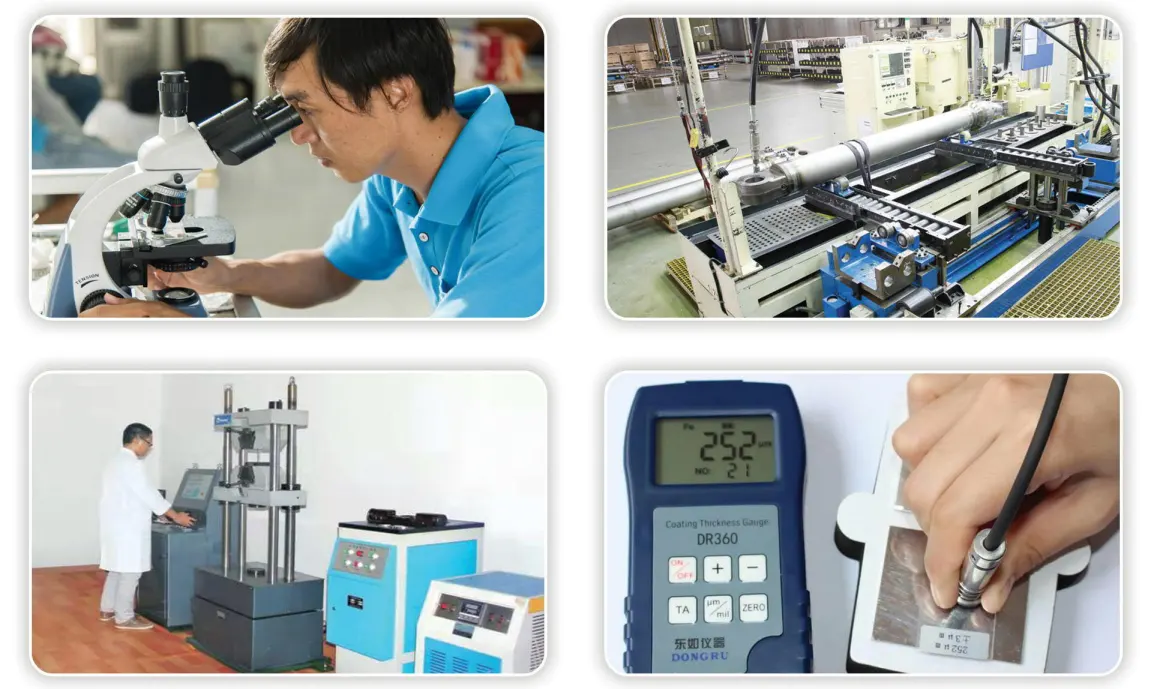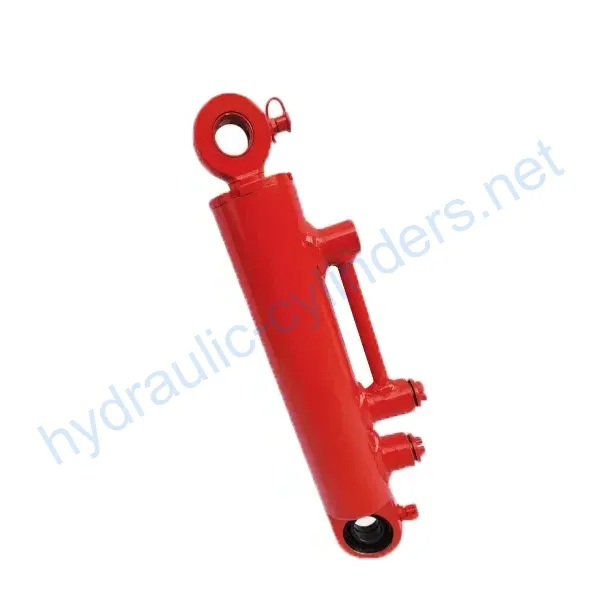Sanitation Vehicle Front Sweep Disc Hydraulic Cylinder
Kot eden od proizvajalcev, dobaviteljev in izvoznikov hidravličnih cilindrov ponujamo hidravlične cilindre in številne druge izdelke.
Za podrobnosti se obrnite na nas.
Pošta:sales@hydraulic-cylinders.net
Proizvajalec, dobavitelj in izvoznik hidravličnih cilindrov.
Sanitation Vehicle Front Sweep Disc Hydraulic Cylinder
Introduction to the Hydraulic Cylinder
The Sanitation Vehicle Front Sweep Disc Hydraulic Cylinder is an essential component designed specifically for sanitation vehicles, facilitating the effective operation of front sweeping systems. This hydraulic cylinder plays a pivotal role in controlling the sweeping mechanism, allowing for smooth and precise movements needed for optimal street cleaning. With its robust design and efficient performance, this hydraulic cylinder ensures that sanitation vehicles can operate effectively, keeping urban environments clean and safe. The hydraulic system converts hydraulic energy into mechanical energy, providing the necessary force to lift, lower, and maneuver the sweeping disc, making it a crucial part of the sanitation process.
Specifications Overview
Understanding the specifications of the Sanitation Vehicle Front Sweep Disc Hydraulic Cylinder is key to appreciating its functionality. Below are the detailed specifications:
- Cylinder Diameter: 40mm
- Rod Diameter: 22mm
- Travel: 60mm
- Installation Distance: 260mm
Expanded Specifications
The cylinder diameter of 40mm offers a balance between strength and size, allowing for significant force application without excessive bulk. The rod diameter of 22mm ensures durability and resistance to bending under load. With a travel distance of 60mm, the cylinder allows for sufficient movement to accommodate various operational requirements. Lastly, the installation distance of 260mm provides flexibility in installation, enabling compatibility with different vehicle models.
Features of the Hydraulic Cylinder
The Sanitation Vehicle Front Sweep Disc Hydraulic Cylinder boasts several standout features:
- High durability due to quality materials used in construction.
- Efficient performance with minimal energy consumption.
- Customizable design to fit various sanitation vehicle models.
- Easy installation and maintenance procedures.
- Robust sealing technology that prevents leakage and ensures longevity.
Application Scenarios
The applications of the Sanitation Vehicle Front Sweep Disc Hydraulic Cylinder are diverse:
- Urban Street Cleaning: This hydraulic cylinder is integral to street cleaning operations, allowing the sweeping mechanism to function efficiently. In urban environments, maintaining cleanliness is critical to public health. The hydraulic cylinder provides the necessary power to ensure thorough cleaning, effectively removing debris and pollutants from roadways.
- Parking Lot Maintenance: In parking facilities, the cylinder enables the cleaning of large areas, ensuring that litter and leaves are effectively cleared. Regular maintenance of parking lots enhances the overall aesthetic and safety, making the hydraulic cylinder a vital tool for facility management.
- Event Cleanup: For events where large crowds gather, sanitation vehicles equipped with these cylinders can swiftly clean up after events, ensuring venues are left spotless. Quick response and effective cleanup are paramount in maintaining community standards and safety.
- Construction Site Cleanup: The hydraulic cylinder facilitates the removal of debris from construction sites, helping to keep job sites safe and organized. This application is essential in ensuring that construction operations can proceed without hazards.
- Snow Removal Operations: In winter maintenance, the cylinder can also be adapted for snow removal, ensuring roads remain clear and safe for travel. This versatility is crucial in regions that experience heavy snowfall.
Design Considerations and Selection Criteria
When selecting a hydraulic cylinder, several design considerations come into play:
- Load Capacity: The load capacity of the hydraulic cylinder must match the operational requirements of the vehicle it serves. It is vital to assess the weight and type of materials being handled to ensure safe and efficient operation. A cylinder that can handle greater loads will extend its lifespan and reduce the risk of failure, making it essential for demanding environments.
- Sealing Performance: Effective sealing is crucial to prevent hydraulic fluid leakage, which can reduce efficiency and damage components. High-quality seals made from durable materials must be chosen to withstand harsh conditions and maintain performance over time. The design must ensure that seals are easily replaceable to facilitate maintenance.
- Durability: The materials used in constructing the hydraulic cylinder should resist wear and corrosion. This durability is vital for operating in various environments, from urban streets to construction sites. An emphasis on using high-strength materials will lead to a longer lifespan and reduce the need for frequent replacements.
- Safety Features: Safety is paramount in hydraulic systems. The design should include features that prevent accidental operation and allow for controlled shut-off in emergencies. This might include pressure relief valves and robust mounting systems that secure the cylinder in place during operation.
- Maintenance Accessibility: A well-designed hydraulic cylinder should allow for easy maintenance and repairs. This includes access to seals and lubrication points that cannot only enhance performance but also increase the safety and reliability of the hydraulic system.
Sealing and Lubrication
Sealing and lubrication play critical roles in the performance and longevity of hydraulic cylinders:
- The use of various sealing components, such as piston seals and rod seals, is essential for maintaining hydraulic pressure and preventing fluid leakage. Selecting seals made from materials such as polyurethane and nitrile rubber ensures resistance to wear and environmental degradation.
- The surface finish of the cylinder body and threaded ends significantly affects the interaction between seals and surfaces. Precision machining and polishing reduce friction, enhancing the sealing effectiveness and extending the service life of the cylinder.
- Regular lubrication with appropriate hydraulic oil is vital to ensure smooth operation and prevent wear. Operators should establish a routine for checking and replenishing hydraulic oil levels, ensuring that the cylinder functions optimally.
Regular Inspection and Preventive Maintenance
To maintain the functionality of the hydraulic cylinder, regular inspections and preventive maintenance are essential:
- Perform routine visual inspections of the cylinder for signs of wear or damage. Any leaks or unusual noises should be addressed immediately to prevent further damage. Regular checks can help identify issues before they become severe, ensuring operational integrity.
- Ensure that lubrication is applied according to the manufacturer??s specifications. Over-lubrication or under-lubrication can lead to issues with cylinder performance. Establishing a clear lubrication schedule will help maintain the cylinder??s effectiveness and longevity.
- Inspect seals periodically to check for wear or degradation. Replacing seals at regular intervals prevents leaks and maintains hydraulic pressure, which is crucial for optimal performance. Developing a seal replacement schedule based on usage can mitigate potential failures.
Installation Guidelines
Proper installation of the hydraulic cylinder is crucial for optimal performance:
- Begin by ensuring that all components are clean and free from debris. Contaminants can cause damage during installation and affect the cylinder’s performance.
- Align the cylinder correctly with the mounting brackets to ensure smooth operation. Misalignment can lead to premature wear and failure. Utilize alignment tools if necessary to achieve precise positioning.
- Secure the hydraulic cylinder using appropriate mounting brackets. It is recommended to use brackets that fit the cylinder dimensions and provide adequate support during operation. Ensure that all fasteners are tightened to the manufacturer’s specifications.
- Connect hydraulic lines according to the diagram provided by the manufacturer. Ensure that fittings are snug and free from leaks, as improper connections can lead to hydraulic fluid loss and potential system failure.
- After installation, conduct a test run to verify that the cylinder operates smoothly without any unusual noises or vibrations. Monitor the system for leaks and ensure that all safety devices are functioning correctly.
Common Maintenance Tasks
Several maintenance tasks are vital for keeping the hydraulic cylinder in good condition:
- Regular Inspections: Routine checks should be performed to assess the condition of the hydraulic cylinder, including visual inspections for leaks, wear, or damage. Early detection of issues can significantly reduce repair costs and downtime.
- Appropriate Lubrication: Following the manufacturer’s guidelines for lubrication is essential. Regularly check oil levels and quality, and replace it as needed to ensure optimal performance. Proper lubrication minimizes friction and wear on moving parts.
- Seal Replacement: Schedule periodic replacement of seals to prevent leaks and maintain hydraulic pressure. Inspect seals for signs of wear and replace them according to the operational environment and usage frequency.
During installation, ensuring correct alignment of the cylinder is paramount. Utilize mounting brackets that provide stability and support, and always follow the manufacturer’s recommendations for secure attachments. Regular checks, repairs, and replacements will significantly enhance the lifespan of the hydraulic cylinder.
Safety Considerations and Environmental Factors
When operating hydraulic cylinders, safety measures are critical:
- Implement safety protocols that protect operators during installation and maintenance. This includes training personnel on safe handling and emergency procedures.
- Ensure that safety guards and barriers are in place to prevent accidents during operation. Proper signage and awareness can help mitigate risks associated with hydraulic systems.
- Regularly assess the environmental impact of hydraulic fluids and ensure proper disposal methods are in place. Utilizing biodegradable hydraulic fluids can minimize ecological damage while maintaining performance.
Troubleshooting and Common Issues
Effective troubleshooting is vital for maintaining the hydraulic cylinder:
- Identify symptoms of malfunction, such as abnormal noises, leaks, or inconsistent operation. Documenting these symptoms can help pinpoint the underlying issue.
- Common problems include seal failures, which can lead to leaks. Inspecting seals during routine maintenance can help detect wear before it becomes a significant concern.
- Check hydraulic fluid levels and quality regularly. Low or contaminated fluid can cause performance issues and should be addressed promptly.
To address issues effectively, implement a systematic approach to diagnosis. Analyze symptoms, consult troubleshooting guides, and follow established procedures for repairs. Preventive measures, such as regular inspections and maintenance, can significantly reduce the occurrence of problems and extend the lifespan of the hydraulic cylinder.

About Our Company
We are a leading manufacturer of hydraulic cylinders, with a comprehensive range of products catering to both domestic and international markets. Our expertise in hydraulic technology has positioned us as a prominent player in the industry, known for our high-quality manufacturing standards and innovative designs. We specialize in custom hydraulic cylinder solutions, providing tailored products to meet specific client requirements.
Our production facilities are equipped with state-of-the-art machinery, ensuring precision and efficiency in every cylinder we produce. We adhere to international quality certifications, reflecting our commitment to excellence and safety. Our dedicated customer service team is always ready to assist with inquiries and provide support, ensuring a seamless experience from order to delivery.

Author: lyl
Take a Tour of Our VR Factory:
Take a tour of our VR factory with the following
Hydraulic Cylinder Application:


